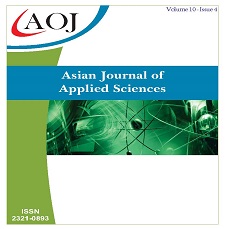Analysis of Local Potential as a Learning Environment in High School in Fak-Fak Regency, West Papua Province, Indonesia
DOI:
https://doi.org/10.24203/ajas.v10i4.7024Keywords:
empirical, caring, and estheticAbstract
This study explores the local potential in Fak Fak Regency, which can be used as learning materials. This study involves junior high school teachers to find local potentials that meet the requirements for implementing environmental education. The elements considered are empirical, caring, aesthetic, and social elements. The analysis of the assessment of the potential of plants to develop students' abilities through empirical recognition found that areca nut plants have the greatest potential on five indicators, namely observation, understanding, analysis, and interpretation which show the high category. Likewise, in the analysis of the development of students' environmental awareness, pinang plants strongly support increasing students' awareness of conservation efforts and the use of their fruit. The results of the analysis of the development of students' aesthetic values found that the matoa plant has the potential to support the development of students' aesthetic assessment.
References
Krasny ME. Advancing environmental education practice. Cornell University Press; 2020.
Rajakumar M, Selvaraj A. Environmental Education Issues and Challenges. Lulu. com; 2017.
Weiland IS, Morrison JA. The integration of environmental education into two elementary preservice science methods courses: A content-based and a method-based approach. J Sci Teach Educ. 2013;24(6):1023–47.
Ngabiyanto M, Susanti MH, Setiajid M. Empowering and Developing The Local Potency Through Thematic Village in Semarang. In: International Conference on Rural Studies in Asia (ICoRSIA 2018). Atlantis Press; 2019. p. 5–7.
Wawo AH, Agusta A, Budiarjo B, Wulan D, Kemal AS. SAINTIFIKASI HERBAL LOKAL PAPUA : BUAH MERAH (Pandanus conoideus Lamk.) [Internet]. Lembaga Ilmu Pengetahuan Indonesia. 2018 [cited 2022 Jul 7]. Available from: http://lipi.go.id/publikasi/SAINTIFIKASI-HERBAL-LOKAL-PAPUA-BUAH-MERAH-Pandanus-conoideus-Lamk/24823
Murningsih T. Kandungan Minyak dan Komposisi Asam Lemak pada Pandanus conoides L dan P. jiulianettii M. In: Proyek Penelitian dan Pengembangan Sumber Daya Hayati. Bogor: Pusat Penelitian dan Pengembangan Biologi LIPI; 1992.
Ramadhan S, Sukma E, Indriyani V. Environmental education and disaster mitigation through language learning. In: IOP conference series: Earth and environmental science. IOP Publishing; 2019. p. 12054.
Baber H. Social interaction and effectiveness of the online learning–A moderating role of maintaining social distance during the pandemic COVID-19. Asian Educ Dev Stud. 2021;
Brown JS, Duguid P. Organizational learning and communities-of-practice: Toward a unified view of working, learning, and innovation. Organ Sci. 1991;2(1):40–57.
Ilma S, Wijarini F. Developing of Environmental Education Textbook Based on Local Potencies. Online Submiss. 2017;3(3):194–201.
Downloads
Published
Issue
Section
License
Copyright (c) 2022 Nikodemus Yafet Tuturop, Hamsu Abdul Gani, Nurlita Pertiwi

This work is licensed under a Creative Commons Attribution-NonCommercial 4.0 International License.
- Papers must be submitted on the understanding that they have not been published elsewhere (except in the form of an abstract or as part of a published lecture, review, or thesis) and are not currently under consideration by another journal published by any other publisher.
- It is also the authors responsibility to ensure that the articles emanating from a particular source are submitted with the necessary approval.
- The authors warrant that the paper is original and that he/she is the author of the paper, except for material that is clearly identified as to its original source, with permission notices from the copyright owners where required.
- The authors ensure that all the references carefully and they are accurate in the text as well as in the list of references (and vice versa).
- Authors retain copyright and grant the journal right of first publication with the work simultaneously licensed under a Attribution-NonCommercial 4.0 International that allows others to share the work with an acknowledgement of the work's authorship and initial publication in this journal.
- Authors are able to enter into separate, additional contractual arrangements for the non-exclusive distribution of the journal's published version of the work (e.g., post it to an institutional repository or publish it in a book), with an acknowledgement of its initial publication in this journal.
- Authors are permitted and encouraged to post their work online (e.g., in institutional repositories or on their website) prior to and during the submission process, as it can lead to productive exchanges, as well as earlier and greater citation of published work (See The Effect of Open Access).
- The journal/publisher is not responsible for subsequent uses of the work. It is the author's responsibility to bring an infringement action if so desired by the author.


